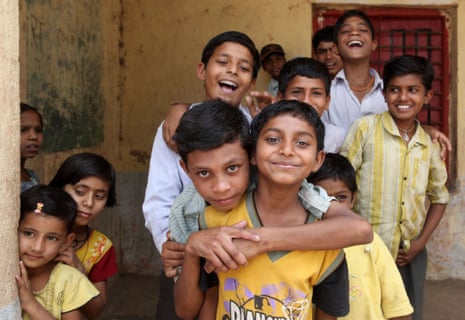An estimated 6.8 million fewer female births will be recorded across India by 2030 because of the persistent use of selective abortions, researchers estimate.
Academics from King Abdullah University of Science and Technology in Saudi Arabia projected the sex ratio at birth in 29 Indian states and union territories, covering almost the entire population, taking into account each state’s desired sex ratio at birth and the population’s fertility rates.
The cultural preference for a son was found to be highest in 17 states in the north of the country, with the most populous state of Uttar Pradesh showing the highest deficit in female births. Researchers predict that the cumulative number of missing female births in the state would be 2 million between 2017 and 2030.
The study, published in the journal Plos One this week, called for strengthened policies that “advocate for gender equity and the introduction of support measures to counteract existing gender biases”.
Anuradha Saxena, a member of the women’s empowerment division for Sikar district, in Rajasthan, said that the figures came as no surprise to her. “It will take time to remove deep-rooted custom and belief. Progress is slow and incremental but we are working on making girls valued and cherished instead of being seen as a liability who needs a huge dowry to be married off,” she said.
India is estimated to have 63 million fewer women since sex determination tests took off in the 1970s.
In 1994, with the passage of the Pre-Conception and Pre-Natal Diagnostic Techniques Act, the Indian government made it illegal to reveal the sex of an unborn child except for strictly medical purposes. However, enforcement of the law varied by jurisdiction, and in much of the country the sex ratio at birth continued to worsen.
Indian police regularly arrest gangs who offer tests to pregnant women, often charging up to £400. The arrests usually follow a tipoff or the use of a pregnant woman as a decoy.
India’s skewed ratio of men to women – currently between 900-930 females per 1,000 males – reflects India’s ingrained attitude towards girls. Boys are seen as breadwinners while girls are seen as a burden across every social class. Boys are more likely to receive more nutritious food and better medical care than girls.
The government, voluntary organisations, the media and some Bollywood stars have all tried to alter these attitudes, and in some states government officials visit the homes where baby girls have been born to make a point of celebrating their arrival.
In Sikar, Saxena said the department was this week launching a new scheme where the name of the girl in the family will be engraved on a nameplate and hung outside the house to show that she has as much importance as a boy.
Sikar had the worst child sex ratio of Rajasthan’s 33 districts, according to the 2011 census – 888 girls born per 1,000 boys.
Early marriage plays a part in aborting female foetuses as girls are often neither well-informed nor confident enough to challenge anyone in their husband’s family.
According to Girls Not Brides, about 27% of girls in India are married before they turn 18. India’s prime minister, Narendra Modi, said recently that he was considering raising the legal age of marriage for girls from 18 to 21.
According to the UN population fund, India and China account for more than 90% of the estimated 1.2 to 1.5 million missing female births worldwide each year because of selective abortion.
